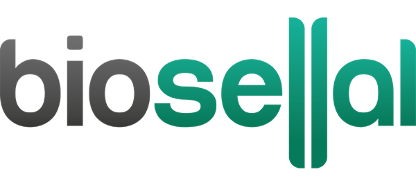New Generation Sequencing (NGS) represents a revolutionary advance in genomics, enabling rapid and accurate analysis of DNA and RNA sequences on a large scale.
Our expertise in New Generation Sequencing (NGS)
This method can be applied at different scales, from the sequencing of whole genomes to the analysis of specific regions, via the detection of mutations, the identification of biomarkers, or the characterization of microbial populations. At BioSellal, our team of experts uses New Generation Sequencing (NGS) technologies on Oxford Nanopore or Illumina platforms on multiple and complex targets to:
✔ Targeted sequencing of pathogens: PRRSV, BVDV, IBDV, IBV, NDV, Flavescence Dorée and others.
✔ Sequencing of complete genomes.
✔ Permanent updating of sequence databases
Principle of Next-Generation Sequencing
New Generation Sequencing (NGS) is a revolutionary technique in molecular biology, enabling the precise order of nucleotides in DNA or RNA to be determined rapidly and cost-effectively. Unlike traditional sequencing methods, NGS enables millions of DNA or RNA fragments to be sequenced simultaneously. The NGS sequencing process comprises several stages, including preparation of the DNA or RNA libraries, loading of the sequencing chips, sequencing itself, and bioinformatics analysis to reconstruct the original sequence. This method has revolutionized research in genetics, medicine, and many other fields, enabling rapid, in-depth analysis of genetic material.
Benefits of Next-Generation Sequencing
Next-generation sequencing (NGS) offers several major advantages over traditional sequencing methods:
.png)
SPEED
NGS enables the rapid sequencing of large quantities of DNA or RNA from one or more samples, considerably speeding up the sequencing process.
.png)
HIGH CAPACITY AND THROUGHPUT
This technology enables the simultaneous sequencing of millions of DNA or RNA fragments from multiple samples, considerably increasing sequencing capacity and quality.
.png)
REDUCED COSTS
NGS has considerably reduced the cost of DNA or RNA sequencing, making it more accessible for routine analysis.
.png)
POLYVALENCE
Several different pathogens can be sequenced in a single assay.
Next-generation sequencing applications
New Generation Sequencing (NGS) is widely used in various fields:
➜ Genomics and genetics research: This is the study of genetic variations, mutations, and gene interactions. It includes the discovery of new species, the study of evolution, and research into genetic diseases.
➜ Personalized medicine: Diagnosing genetic diseases, predicting the risk of certain diseases, and selecting targeted treatments based on patients' genetic profiles.
➜ Oncology: To identify genetic mutations responsible for cancer, help develop targeted therapies, and monitor disease progression.
➜ Microbiology: To characterize microbial populations in various environments, including research on human microbiomes, natural ecosystems, and pathogen monitoring.
➜ Virology: For the characterization and classification of viral genomes.
➜ Agriculture and food safety: To improve crop breeding, understanding of disease resistance mechanisms in plants, and enabling food tracing to guarantee food safety.
➜ Archaeology and anthropology: To trace the evolutionary history of human populations, study ancient migrations, and understand the links between individuals and ethnic groups.
➜ Prenatal diagnosis: To analyze fetal DNA to detect genetic abnormalities during pregnancy.
➜ Environmental monitoring: To assess human impact on ecosystems by studying the genetic diversity of species and monitoring changes in populations of organisms.
